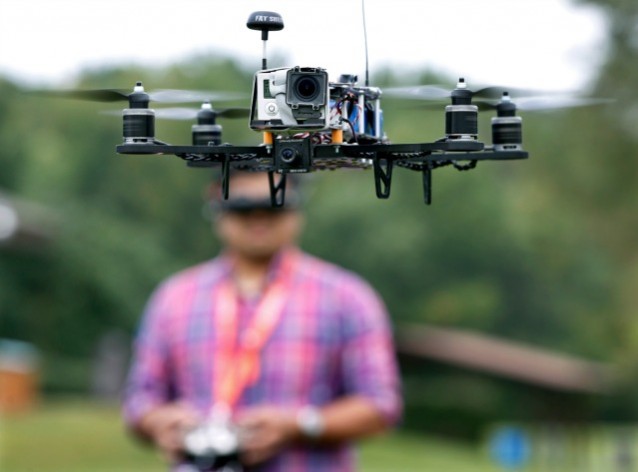
CREDIT: AP – Mel Evans
A new hacker-developed drone can lift your smartphone’s private data
from your GPS location to mobile applications’ usernames and passwords —
without you ever knowing. The drone’s power lies with a new software,
Snoopy, which can turn a benign video-capturing drone into a nefarious
data thief.
Snoopy intercepts Wi-Fi signals when mobile devices try to find a
network connection. London researchers have been testing the drone and
plan to debut it at the Black Hat Asia cybersecurity conference in
Singapore next week. Snoopy-equipped drones can aid in identity theft
and pose a security threat to mobile device users.
Despite its capabilities, the drone software project was built to
raise awareness and show consumers how vulnerable their data is to
theft, Glenn Wilkinson, a Sensepost security researcher and Snoopy’s
co-creator, told CNN Money.
As a part of its controversial surveillance programs, the U.S. National Security Agency already uses similar technology
to tap into Wi-Fi connections and control mobile devices. And even
though Snoopy hasn’t hit the market, phone-hacking drones could become a
reality in the United States now that a federal judge recently overturned
the U.S. Federal Aviation Administration’s commercial drone ban.
Because the ban was lifted, filmmakers and tech companies such as
Facebook and Amazon are now allowed to fly drones — be it to increase
Web access or deliver packages — for profit.
Before latching onto a Wi-Fi signal, mobile devices first check to see if any previously connected are nearby. The Snoopy software
picks up on this and pretends to be one of those old network
connections. Once attached, the drone can access all of your phone’s
Internet activity. That information can tell hackers your spending
habits and where you work.
With the right tools, Wi-Fi hacks are relatively simple to pull off, and are becoming more common. Personal data can even be sapped from your home’s Wi-Fi router. And because the number of Wi-Fi hotspots keeps growing, consumers must take steps, such as using encrypted sites, to protect their data.
Data breaches overall are happening more often. Customers are still feeling the effect of Target’s breach
last year that exposed more than 100 million customers’ personal data.
But as smartphones increasingly becoming the epicenter of personal data
storage, hacks targeting the device rather than individual apps pose a
greater privacy and security threat.
According to a recent Pew Research study,
about 50 percent of Web users publicly post their birthday, email or
place of work — all of which can be used in ID theft. Nearly 25 percent
of people whose credit card information is stolen also suffer identity
theft, according to a study
published by Javelin Strategy & Research of customers who received
data breach notifications in 2012. Moreover, most people manage about 25
online accounts and only use six passwords, quadrupling the potential
havoc from one account’s password breach.

